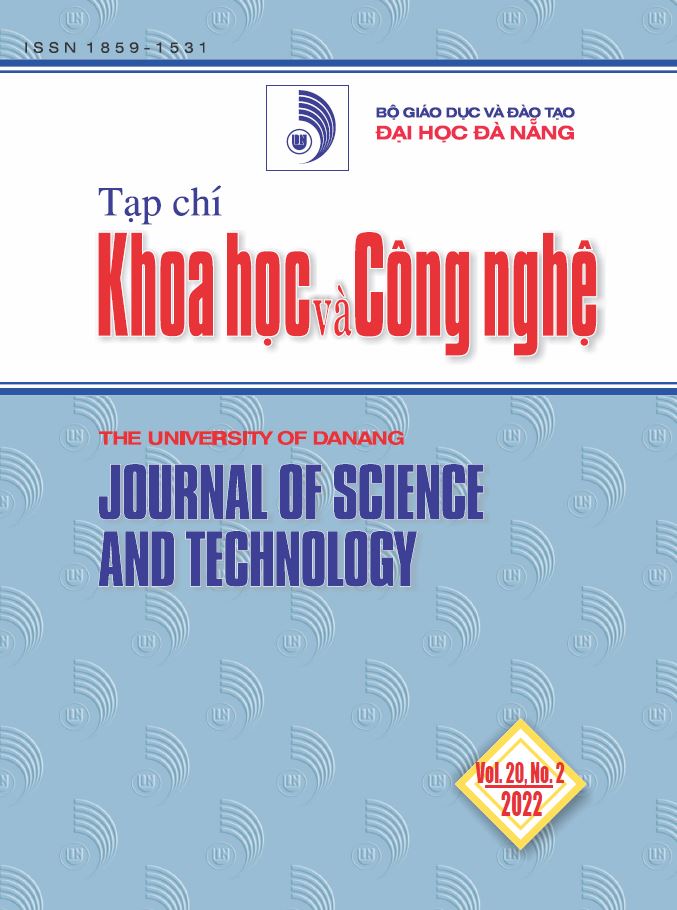Thực trạng rối loạn trầm cảm và nhu cầu hỗ trợ xã hội của bà mẹ có con dưới 6 tháng tuổi tại thành phố Đà Nẵng
 Tóm tắt: 572
Tóm tắt: 572
 |
|  PDF: 591
PDF: 591 
##plugins.themes.academic_pro.article.main##
Author
-
Bùi Văn NhiềuTrường Đại học Kỹ thuật Y - Dược Đà NẵngNgô Thị Hồng UyênTrường Đại học Kỹ thuật Y - Dược Đà NẵngĐoàn Thị Ngọc TrâmTrường Đại học Kỹ thuật Y - Dược Đà Nẵng
Từ khóa:
Tóm tắt
Mục đích: Xác định tỷ lệ rối loạn trầm cảm và một số yếu tố liên quan ở bà mẹ có con dưới 6 tháng tuổi. Mô tả mức độ hỗ trợ xã hội ở đối tượng nghiên cứu đã đề cập. Tìm hiểu nhu cầu hỗ trợ xã hội ở đối tượng nghiên cứu. Số khách thể: 349. Phương pháp: Nghiên cứu kết hợp định lượng và định tính.
Kết quả 1: Tỷ lệ rối loạn trầm cảm sau sinh là 23,5%; Sự khác biệt có ý nghĩa thống kê giữa rối loạn trầm cảm sau sinh và một số yếu tố như tình trạng sử dụng rượu bia, chất lượng giấc ngủ của bà mẹ, đời sống tình dục của bà mẹ sau sinh(p<0,05).
Kết quả 2: Điểm trung bình của thang đo hỗ trợ xã hội MOS SSS là 3,52 ± 0,87. Kết quả 3: Bà mẹ có rối loạn trầm cảm sau sinh cần nhu cầu hỗ trợ xã hội là có tiền trang trải cho cuộc sống, có người phụ bên chăm con, có công việc và được cung cấp kiến thức về chăm con
Tài liệu tham khảo
-
[1] Hiroko Iwata, et al, “Prevalence of postpartum depressive symptoms during the first 6 months postpartum: Association with maternal age and parity”, Journal of Affective Disorders, 203, 2016, 227-232.
[2] Liberto T.L., “Screening for Depression and Help-Seeking in Postpartum Women During Well-Baby Pediatric Visits: An Integrated Review”, J Pediatr Health Care, 26(2), 2012, 109–117.
[3] Shidhaye P, Giri P, “Maternal depression: a hidden burden in developing countries”, Ann Med Health Sci Res, 4(4), 2014, 463–5.
[4] Mental health, WHO, <https://www.who.int/mental_health/maternal-child/maternal_mental_health/en/ >, accessed 10 November 2020.
[5] Upadhyay RP, et al, “Postpartum depression in India: a systematic review and meta-analysis”, Bull World Health Organ, 2017;95(10):706-717.
[6] Thủ tướng chính phủ (2019), Quyết định phê duyệt Chiến lược dân số Việt Nam đến năm 2030, số 1679/ QĐ-TTg.
[7] Nguyễn Hoài Thảo Tâm và Huỳnh Ngọc Vân Anh, “Trầm cảm sau sinh và các yếu tố liên quan ở phụ nữ sau sinh trong vòng 6 tháng tại huyện Trảng Bom, tỉnh Đồng Nai”, Y Học TP. Hồ Chí Minh, 23(5), 2019.
[8] L. Cox, et al, “Detection of Depression Development of the 10-item Edinburgh Postnatal Depression Scale”, British Journal of Psychiatry, 150, 1987, 782-786.
[9] Davies BR, Howells S, Jenkins M. Early detection and treatment of postnatal depression in primary care, J Adv Nurs, 44(3), 2003, 248-55.
[10] Barnett, B., Matthey, S. & Gyaneshwar, R. Screening for postnatal depression in women of non-English speaking background. Arch Womens Ment Health 2, 1999, 67–74.
[11] Lê Tống Giang, “Giá trị, độ tin cậy của thang đo trầm cảm rút gọn (CES-D) và thang đo trầm cảm sau sinh Edinburgh (EPDS) của phụ nữ sau sinh tại TP. Huế, Thừa Thiên Huế, Việt Nam”, Tạp Chí Y học Dự phòng, XXV 5, 2015,165-414.
[12] Tran TD, et al, “Validation of the depression anxiety stress scales (DASS) 21 as a screening instrument for depression and anxiety in a rural community-based cohort of northern Vietnamese women”, BMC Psychiatry, 13(24), 2013.
[13] DiMillo J, et al, “The Berlin Social Support Scales: Validation of the Received Support Scale in a Canadian sample of patients affected by melanoma”, J Health Psychol, 24(13), 2019, 1785-1795.
[14] Khuong, et al, “Psychometric properties of the medical outcomes study: Social support survey among methadone maintenance patients in Ho Chi Minh City, Vietnam: a validation study”, Subst Abuse Treat Prev Policy, 13(8), 2018.
[15] Hahn-Holbrook J, et al, “Economic and Health Predictors of National Postpartum Depression Prevalence: A Systematic Review, Meta-analysis, and Meta-Regression of 291 Studies from 56 Countries”, Front Psychiatry, 8 (10), 2017, 248-272.
[16] Hai-Xin Bo, et al, “Prevalence of depressive symptoms among Chinese pregnant and postpartum women during the COVID-19 pandemic”, Psychosom med, 83(4), 2021, 345-350.
[17] Lê Thị Thùy và Trần Như Minh Hằng, “Nghiên cứu tỷ lệ hiện mắc trầm cảm sau sinh và một số yếu tố liên quan tại thành phố Huế năm 2016”, Tạp chí Y Dược học - Trường Đại học Y Dược Huế, 8(3), 2018, 12-18.
[18] Dương Thị Kim Hoa và Võ Văn Thắng, “Trầm cảm sau sinh và các yếu tố liên quan ở phụ nữ có cồng tại quận Hải Châu, thành phố Đà Nẵng”, Tạp chí Y học Dự phòng, 8, 2013, 168-342.
[19] Jennifer L, et al, “Social Network and Emotional Intelligence in Pregnancy and Postpartum”, Interpersona, 12 (2), 2018, 164-179.
[20] Schwab-Reese L. M, et al, “Associations of social support and stress with postpartum maternal mental health symptoms: Main effects, moderation, and mediation”, Women Health, 57 (6), 2017, 723-740.
[21] Merton RK, et al, The focused interview: A manual of problems and procedures, 2nd ed. London: Collier McMillan, 1990.
[22] Rennie Negron, et al, “Social support during the postpartum period: Mothers’ views on needs, expectations, and mobilization of support” Matern Child Health J, 17(4), 2013, 16-23.
[23] Azale, et al, “Treatment gap and help-seeking for postpartum depression in a rural African setting Telake Azale”, BMC Psychiatry, 16(196), 2016.
[24] Logsdon M and Usui W, “Psychosocial predictors of postpartum depression in diverse groups of women”, West J Nurs Res, 23(6), 2001, 563–574.
[25] Irma Nurbaeti, et al, “Association between psychosocial factors and postpartum depression in South Jakarta, Indonesia”, Sexual & Reproductive Healthcare, 20, 2019, 72-76



